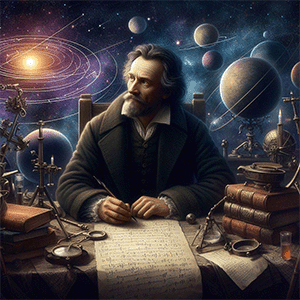 Johannes Kepler, a brilliant astronomer of the Renaissance era, unraveled the intricate dance of celestial bodies with his groundbreaking laws of planetary motion. Among these, his third law stands as a cornerstone in understanding the harmony of the cosmos. Let’s delve into Kepler’s observations, his initial errors, the eventual corrections, and the ultimate confirmation of his third law on May 15, 1621, along with its enduring legacy.
Johannes Kepler, a brilliant astronomer of the Renaissance era, unraveled the intricate dance of celestial bodies with his groundbreaking laws of planetary motion. Among these, his third law stands as a cornerstone in understanding the harmony of the cosmos. Let’s delve into Kepler’s observations, his initial errors, the eventual corrections, and the ultimate confirmation of his third law on May 15, 1621, along with its enduring legacy.
Kepler’s journey towards discovering his third law began with meticulous observations of the planets’ motion around the Sun. Armed with data meticulously recorded by Tycho Brahe, Kepler embarked on a quest to decipher the underlying patterns governing planetary orbits. His observations revealed that the time a planet takes to orbit the Sun is not uniform but varies with its distance from the Sun.
Kepler initially attempted to fit circular orbits to planetary motion, adhering to the prevailing geocentric model. However, his calculations failed to reconcile with observational data. Undeterred, Kepler abandoned the circular paradigm and embraced the concept of elliptical orbits. This pivotal shift paved the way for his third law.
On May 15, 1621, Kepler’s tireless pursuit bore fruit as he unveiled his third law of planetary motion. This law, succinctly stated as “The square of the orbital period of a planet is directly proportional to the cube of the semi-major axis of its orbit,” provided a mathematical framework to describe the motion of planets around the Sun. The meticulous analysis of observational data, coupled with Kepler’s mathematical genius, culminated in the validation of his law.
Kepler’s third law transcends its historical significance, shaping our understanding of celestial mechanics and laying the foundation for Newton’s law of universal gravitation. Its profound implications extend far beyond the confines of our solar system, guiding astronomers in unraveling the mysteries of distant galaxies and exoplanetary systems. Moreover, Kepler’s relentless pursuit of truth serves as an inspiration for future generations of scientists, emphasizing the transformative power of curiosity and perseverance.
Kepler’s third law stands as a testament to human ingenuity and the power of scientific inquiry. From its humble origins in Kepler’s meticulous observations to its profound legacy in shaping our understanding of the cosmos, this law remains an enduring symbol of humanity’s quest to decipher the mysteries of the universe.
Leave a comment